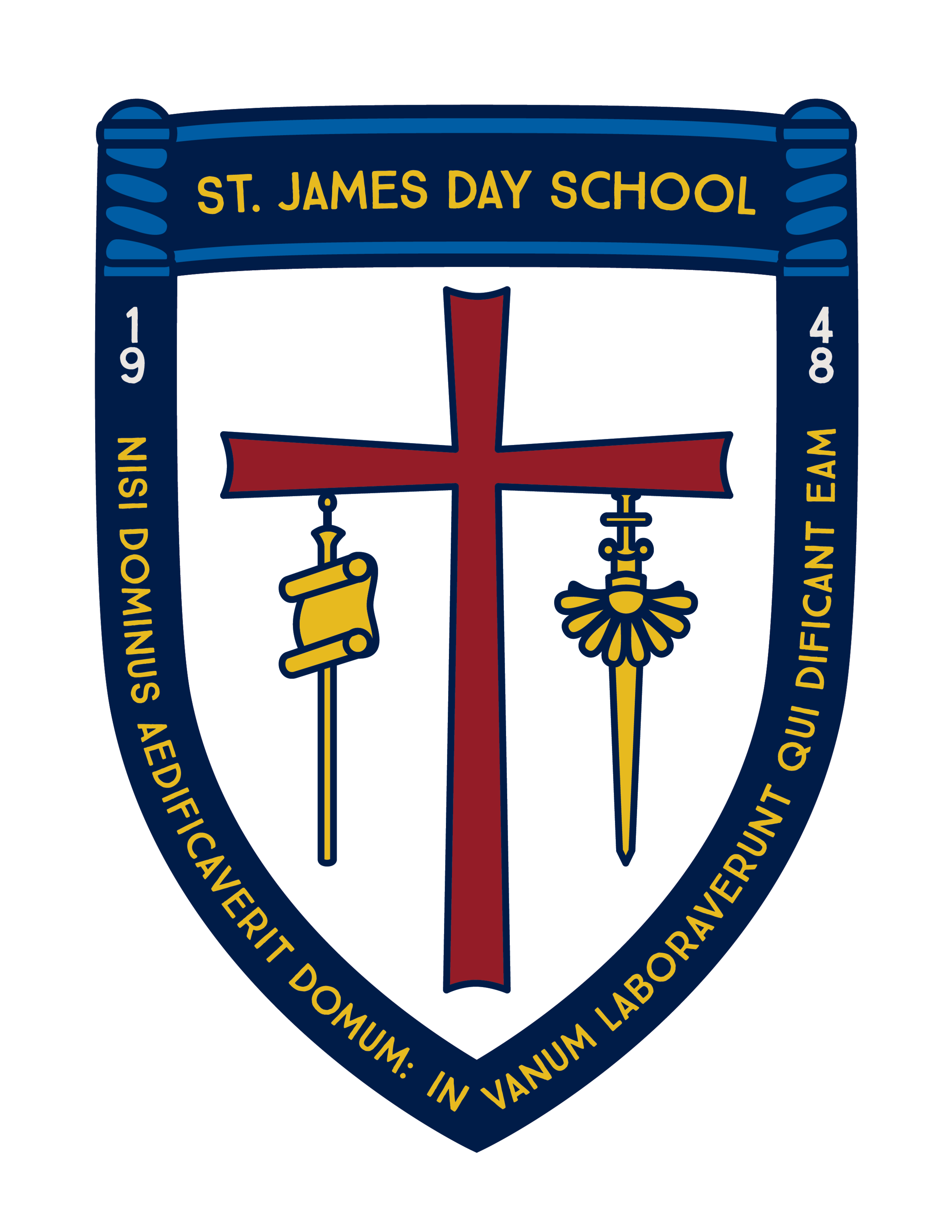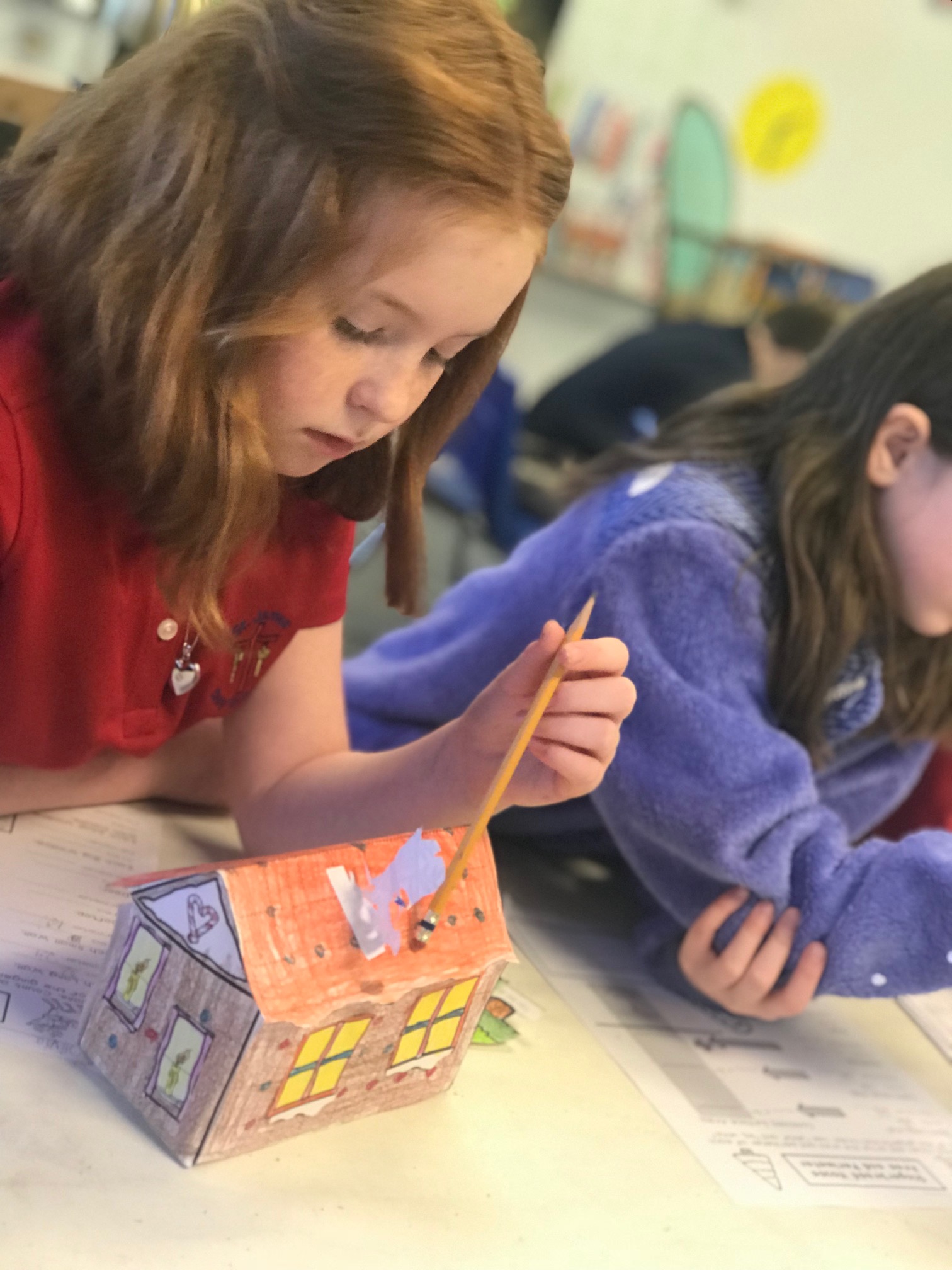We use a lot of learning stations in third grade! This enables me to differentiate student tasks, integrate movement around the classroom, monitor progress in small groups, and provide a variety of different activities in shorter bursts. I often break up my literacy and math blocks with a rotation of different activities to make the most of my instruction time. We get a lot accomplished, and the pace of the shorter activities maximizes short attention spans. Best of all, the kids enjoy them so student learning increases with their positive engagement.
Last week we used snowflakes to integrate our math and language lessons! The students wrote an informative paper to describe what we did so I will let their words do the explaining!
"Brr! It's very cold outside, but the only snowflakes we've seen are in our classroom. We made paper snowflakes and used them to learn new things.
Making the snowflakes required us to listen carefully and follow the directions exactly. Then we used creativity to make a unique design.
Then in our math groups we used the snowflakes to find polygons and angles. My snowflake design had quadrilaterals and triangles. Then we looked for angles. My design most had obtuse and acute angles.
Later in language we made a big list of adjectives that described our snowflakes. My snowflake is blue, paper, and pretty.
Our snowflakes were a fun way to learn. Maybe it will snow outside and we can have fun with real snowflakes!"
Just a few days later our beautiful campus was covered with a blanket of snow. After an unexpected day out of school, we came back and made "indoor snow" and sipped cocoa while we designed marketing plans for our own hot chocolate stands!
MATHEMATICS AT ST. JAMES DAY SCHOOL
There is an old saying that if you get two educators in a room, you will have three opinions about which curriculum is best! And likely a dozen textbook companies willing to sell the latest and shiniest course.
Mathematics has been a particular flash point in these different outlooks on curriculum. In the 1990s, most public schools shifted to Reform Mathematics, which was itself a reform of the New Math of the 1960s and onwards.
The predominant reform approach to math has not been a great success. In the period of 2012-2015, the United States has slipped 12 points in the PISA assessment administered by the Organization for Economic Cooperation and Development (OECD), an assessment that includes students from nearly 70 countries throughout the world.
Many private schools, St. James included, stayed the course by teaching Classical Mathematics, with one significant change being that traditional concepts are taught at earlier ages than they were in past generations.
At St. James, we continue to use a classical curriculum because it has been our experience, honed over many years, that the traditional structure is best for laying a developmentally-appropriate and solid foundation leading to long-term mastery of content skills for success in higher math in middle school and beyond.
St. James uses the Saxon Math curriculum across grades 1 through 6. Its pedagogical underpinnings include the following:
· An incremental development of concepts with understanding its parts before trying to work with the whole concept
· Continual review with required homework that has 85% of problems from previous lessons (no skipping of lessons unless student shows 80% mastery of problems from that lesson; no working “every other” problem)
· De-emphasis of transitory test-taking tricks in favor of permanent mastery of concepts
· Frequent cumulative assessments
· No “hunk swallowing” of topics
· Practice with new problems of repetition for learning, not for drilling
· No use of calculators.
With minor adjustments which we make, our curriculum correlates to Common Core and TEKS (the Texas Essential Knowledge and Skills) for math.
Each year, we use the Stanford Achievement Test Series (SAT10), to measure our educational achievement. The Stanford, used by many private schools, rates our students’ achievement not against a district norm, nor even a state norm, but against a national cadre. We analyze these results closely at the end of each academic year.
Instead of an approach to education based on “the average student”, we tailor our educational experience for each particular student. As you would expect, different students have different skills and move at different paces. For those students who need a “bump up” in a particular core subject, we provide it. We do the same for those students who need extra support.
Because St. James provides this individualized education, our yearly analysis of the SAT10 is for each student. This way we can differentiate the educational experience so that each child learns at his own pace and in her own way. We understand that this personal attention is one of the reasons that you send your child to St. James.
Needless to say, there will be students who excel in subjects when they leave us, math included, and those who will need extra support, but a firm foundation of skills and comprehension will have been laid at St. James in either case.
As a whole, St. James graduates regularly and consistently
· finish high school in the top ten percent of their class
· receive significant college scholarship awards
· are admitted to many of the most selective colleges to which they apply. To give but one example, this year one of our 2011 graduates was admitted to Harvard.
Since 2000, thirteen St. James graduates have been either the valedictorian or salutatorian of local public high schools. In eight of those years, St. James grads have seen both valedictorians and salutatorians amongst the several local schools. This is hardly a statistical anomaly, but a remarkable accomplishment given that our graduates comprise only the tiniest percentage of the thousands of students who attend these educational institutions.
St. James Day School consults regularly with wider educational leaders to ensure that we are preparing our students for their next educational placement. To keep current, we confer with local educators at public middle school, high school and university levels. We also have the benefit of the collective wisdom of a community of Episcopal Schools through our accrediting body. This consultation means that we provide the best and most up-to-date educational experience possible.
As always, the Administration of the School welcomes and encourage ongoing feedback from parents, knowing as we do that we are partners in your child’s education. For seventy years now, St. James has been the educational leader in Texarkana. We are thankful that your family is part of this tradition of educational excellence.
It’s the most wonderful time of the year! The third graders are enjoying the Advent season as we prepare to celebrate our Savior’s birth. We’ve sprinkled a little holiday-themed fun into our regular activities with projects like creating “quadrilateral nutcrackers”, calculating the area and perimeter of gingerbread houses, and making a wall-sized “merry multiplication” table. We're learning new concepts and naturally committing them to memory through engaging, memorable experiences!












